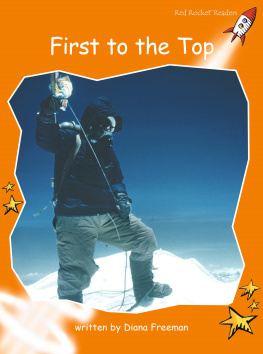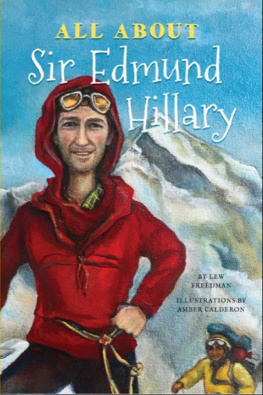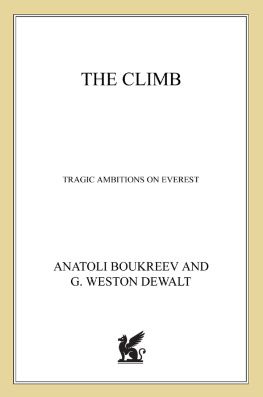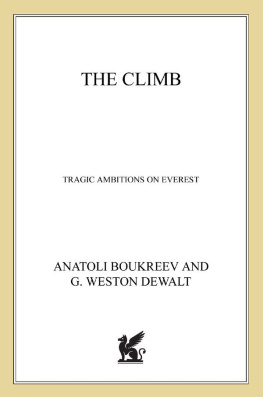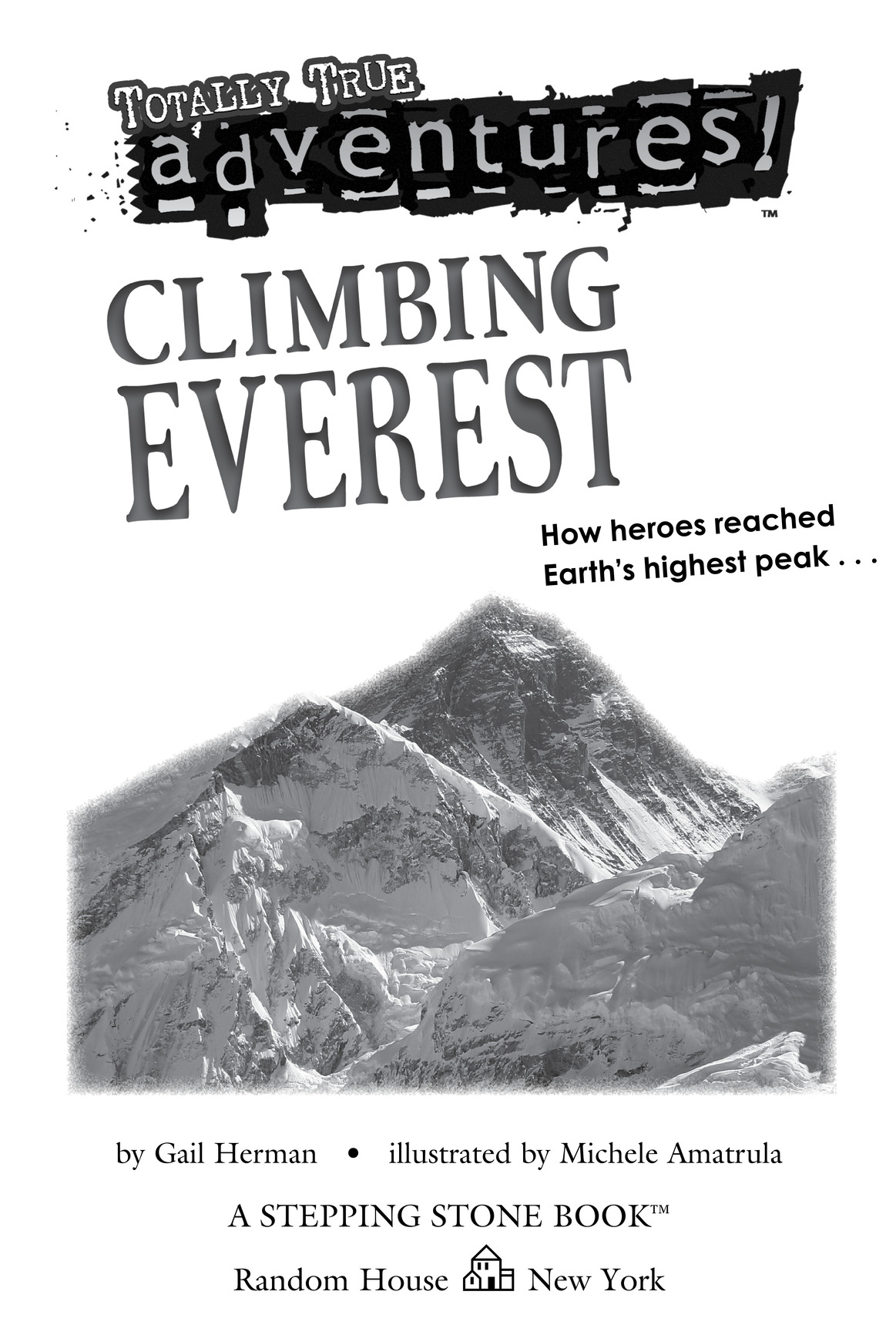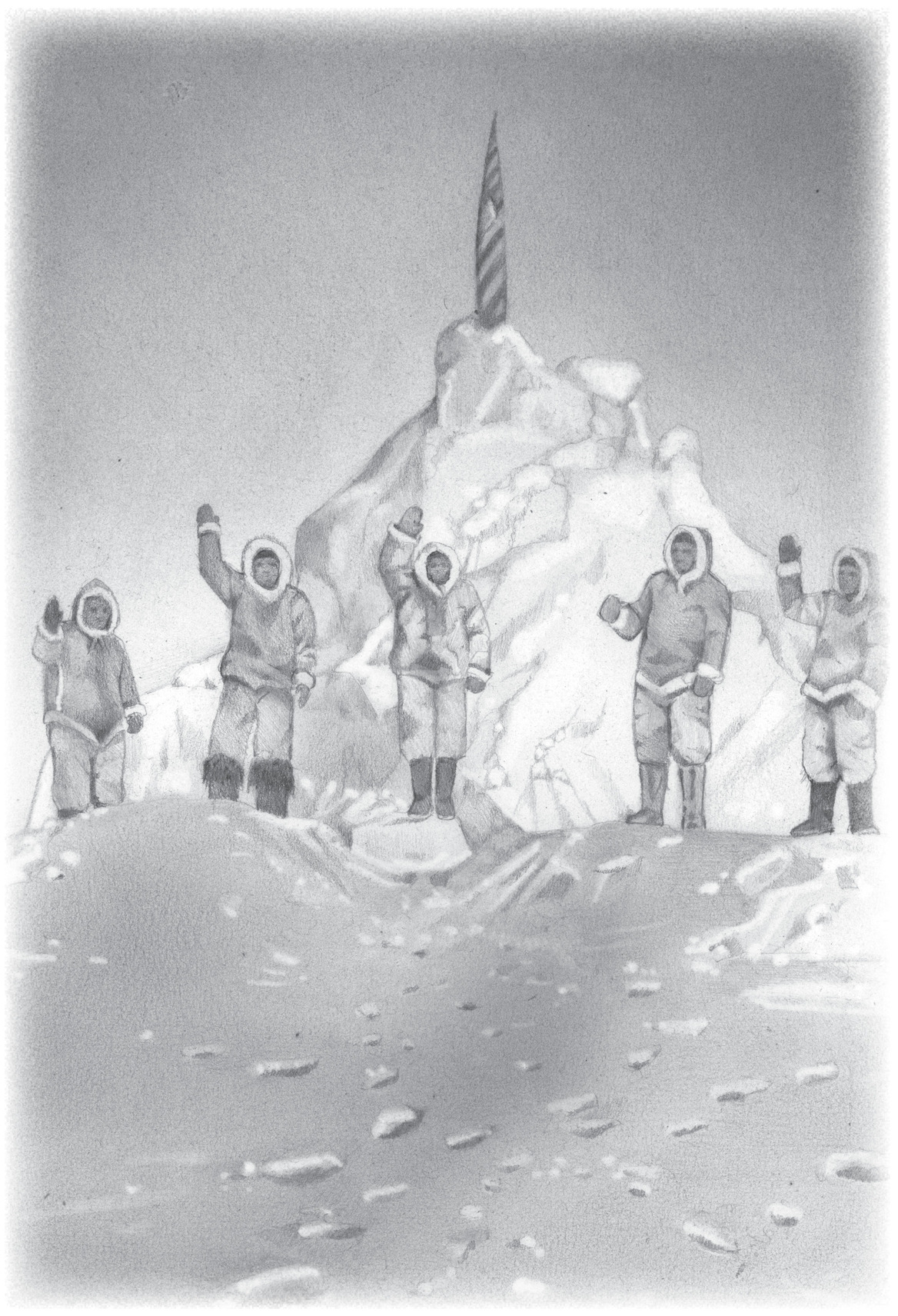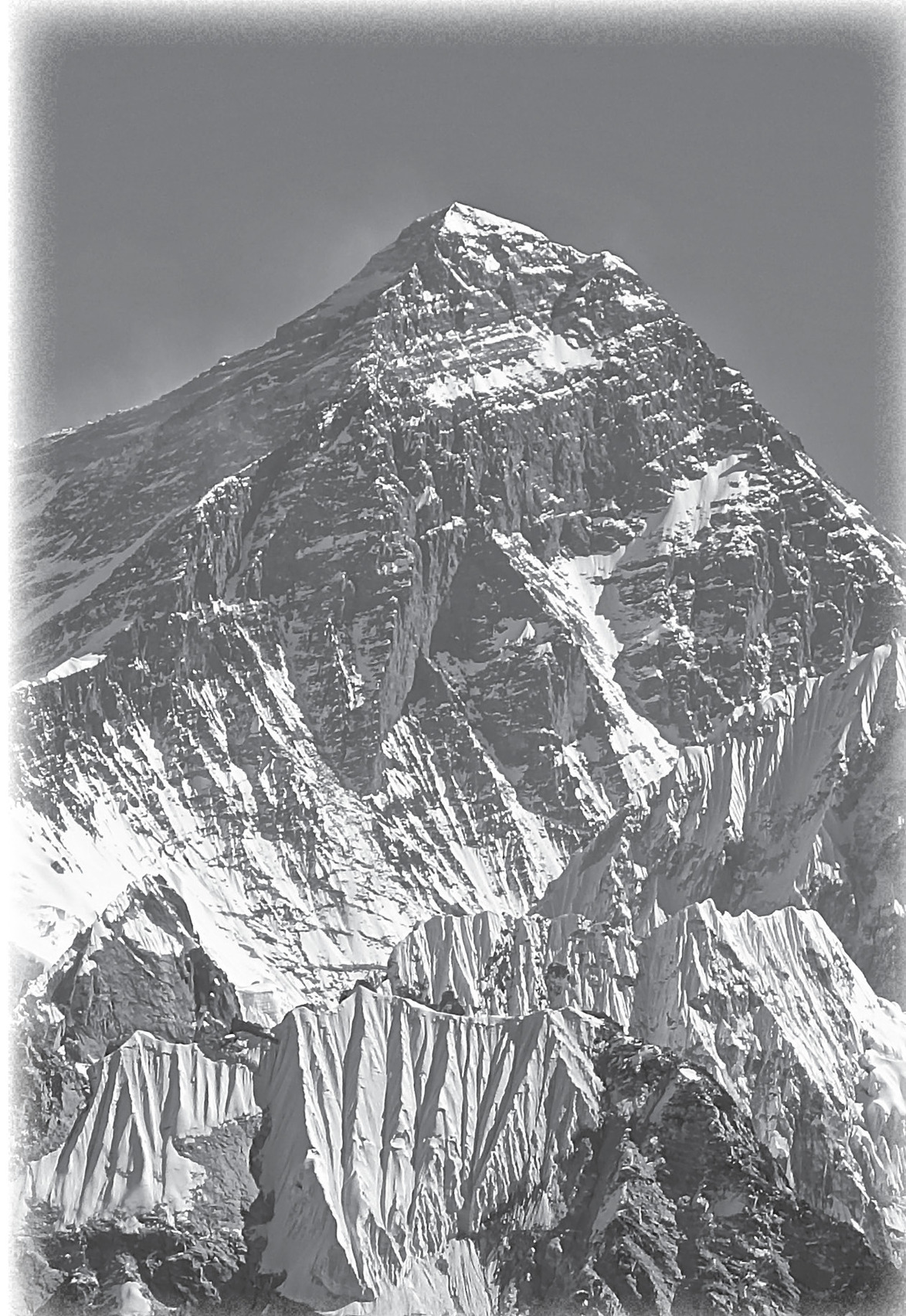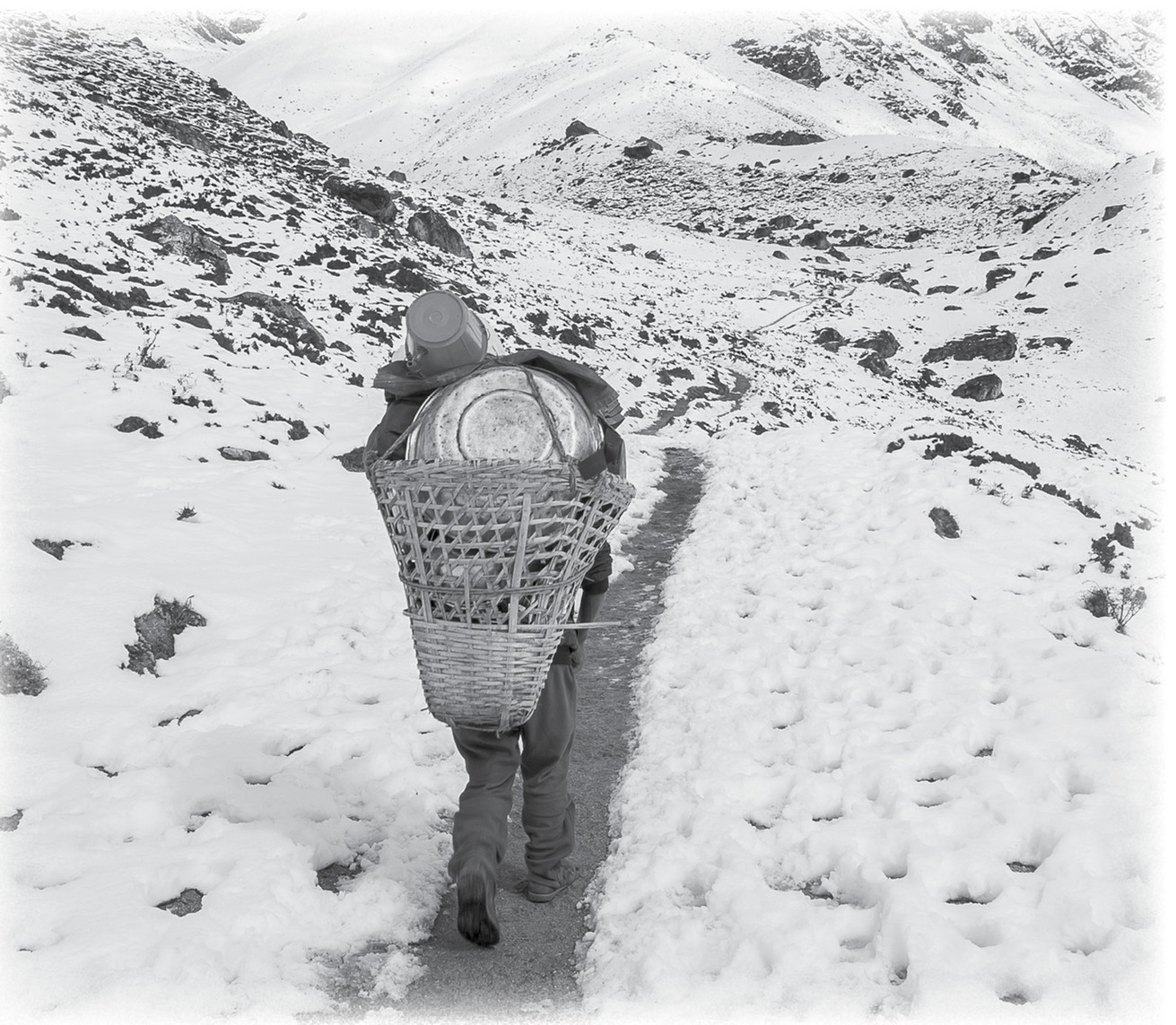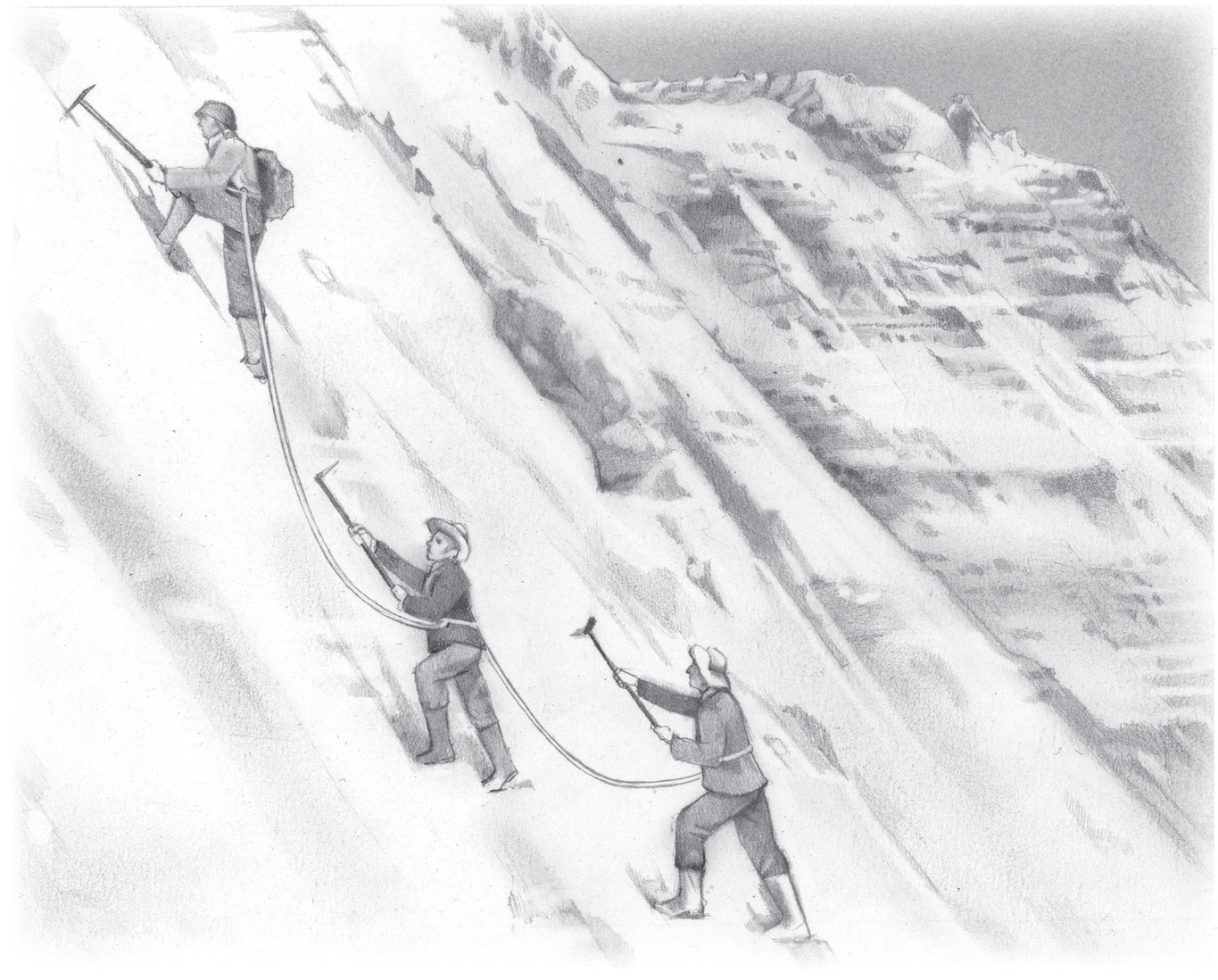Finding the First T. Rex
Photograph credits: title page che/CC-BY-2.5; Uwe Gille/Wikimedia Commons/CC-BY-SA-3.0/GFDL
All rights reserved. Published in the United States by Random House Childrens Books, a division of Penguin Random House LLC, New York.
Random House and the colophon are registered trademarks and A Stepping Stone Book and the colophon are trademarks of Penguin Random House LLC.
Educators and librarians, for a variety of teaching tools, visit us at RHTeachersLibrarians.com
Library of Congress Cataloging-in-Publication Data is available upon request.
ISBN9780553509861 (trade) ISBN9780553509878 (lib. bdg.) eBook ISBN9780553509885
This book has been officially leveled by using the F&P Text Level Gradient Leveling System.
Random House Childrens Books supports the First Amendment and celebrates the right to read.
1
The Highest Challenge
H ow far would you go for adventure?
Centuries ago, explorers went thousands of miles. They crossed oceans. They blazed trails through forests and jungles. They wanted to discover places no one had seen. By the early 1900s, there werent many new places left. Explorers had covered almost every corner of the world.
In 1909, explorers even reached the North Pole. In 1911, others conquered the South Pole. Now what? some wondered. What would be the next great challenge?
To find their answer, explorers looked up. Their thoughts turned to Asia and to the tallest mountain range on Earth, the Himalayas. This chain of mountains has the highest peak of all. It is on the border between Tibet and Nepal. Some call it the third pole.
Mount Everest.
In the mid-1800s, an Indian and British team measured Everests height. They used a giant instrument called a theodolite. The height amazed them: 29,002 feet. The measurement was very close to what we know it is today: 29,035 feet. It was almost twice as tall as the Rocky Mountains.
Everest was officially the highest place on Earth.
No one had tried to climb its highest points. Not even the Sherpas, the people who lived in its shadow, had aimed for the top.
Sherpa means people from the East. The Sherpas first settled around Everest more than 400 years ago. To get there, they trekked over mountain passes from Tibet to Nepal. They carried everything they owned on their backs. They built villages right into the sides of steep foothills. Their homes stood on ground higher than most mountaintops in the United States.
Sherpas called their mountain Chomolungma. Some say the name means mother goddess of the world. But to the Sherpas, it means the mountain so high, no bird can fly over it. In other parts of Nepal, it is called Sagarmatha, which means head of the sky or ocean mother.
As for Everest, that name honors Sir George Everest. He was in charge of mapping and measuring the Himalayas.
But by any name, Mount Everest stands apart from all other peaks. And by the 1900s, getting to its top became every explorers dream.
But could they survive the climb?
These men would have to tackle deadly weather in almost every season. Each year in the Himalayas, heavy, heavy rains fall between June and September. These are the monsoons, sudden storms that change the land. Bare, dusty ground turns into green grassy fields. Trees, bushes, and flowers grow. But monsoons bring flooding, too. And high in the mountains, the rain becomes snow, many feet deep.
The top of Everest, called the summit, is always very cold. Even in summer, the temperature hovers around zero degrees. In winter months, it can feel as low as seventy-five degrees below zero, matching the coldest temperatures in the Arctic. The worst winds on Everest are more than twice as strong as a hurricane. They can blow a person right off the mountain.
In the early 1900s, climbers could only imagine the dangers. But theyd reached the summit of the famous Matterhorn in the Swiss Alps. Theyd climbed mountains in South America and in Alaska. They knew how to climb in ice and snow.
These men used axes to cut into ice and make steps. They roped themselves together, by tying one long rope around their waists. That way if one climber fell, the others could stop him from dropping farther. To keep each climber even safer, a partner wrapped the rope around a rock or an ax.
They knew the dangers. The higher they climbed, the colder and windier it would get. The air would grow thinner, and breathing would be harder. No one had climbed higher than 24,600 feet. Everests summit was thousands of feet higher.
The risks didnt stop there. Would there be more avalanches so high up?
An avalanche is a great pile of snow that slides down a mountain. The snow gathers speed. And it grows bigger as it falls. It can sweep climbers down slopes and bury everything in its way.






